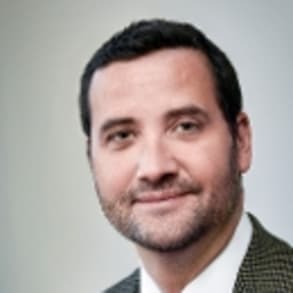Fernando Ferrer, MD, and Erin Miller, MSN, RN, CPNP-BC, discuss the Mount Sinai Hospital’s Pediatric Voiding Dysfunction Program, which diagnoses and successfully treats voiding dysfunction in children.
For more information : https://www.mountsinai.org/care/urology/services/pediatric-urology/voiding-dysfunction
Referring a patient is easy. Just click the “Refer a Patient Online” button.
Hi, I'm Fernando Farrar. I'm the chief operating officer of Kravis Children's Hospital, Mount Sinai, but I'm also a practicing pediatric urologists within the department of Urology where I'm senior faculty, I am Aaron Miller, I'm the practitioner in the department of Urology uh in the sub specialty of pediatric urology. So a voiding dysfunction as you'll hear is a common condition that oftentimes presented primary care providers or family practitioners and really come, comprises a large portion of the population seen by pediatric urologists. So to date, there hasn't been a really robust, comprehensive voiding dysfunction program in new york city. Um and that would be a program that encompasses not only all of the diagnostic modalities but also the treatment modalities which you'll hear about, like biofeedback and so on and so forth. Our program is, is unique in the sense that we take a multidisciplinary comprehensive view and we can manage all of the aspects of voiding dysfunction either ourselves or through consultation services with our colleagues in nephrology, for example, or General surgery or gastroenterology because oftentimes these Children have more than a urinary problem associated um as well as uh issues of neurologic concerns through neurology or neurosurgery because some of the times these Children have specific neurologic issues as well, well as Children become continent around the age of three. Um sometimes a little younger than that, voiding dysfunction can present itself around this time as they learn certain figures related to avoiding, you know, it's fairly common. You see it between the ages of three and 10 and it happens in girls and boys, but we do more commonly see it and girls. So the goals of treatment to some extent are specific to the patient's problems. While there's an underlying disorder, the Children may manifest with different symptoms. So for example, and some Children, recurrent urinary tract infections are the problem. So managing their their issues such that they diminish the rate of urinary tract infection or in some cases incontinence is the problem or daytime wedding managing their condition so that we eliminate those problems. Oftentimes there's um significant issues related to bowel function um such as constipation are holding um and managing their condition and treating them to eliminate those problems can be an objective. So in summary whether it be diminishing urinary tract infections, improving daytime continents, avoiding habits. Our bow are sort of the high level goals of a program like this. Um to be frank. Sometimes we do discover that Children's Children either related to or caused by um have some psychological issues. And um Oftentimes we seek to support Children um through this by contact with our psychology colleagues or if we find any other associated issues like neurologic issues, we obviously seek to once identified to get them appropriate treatment for that. Um We offer many treatments, the treatment plan usually involved um Many things including time voiding, so we'll have the Children void on a schedule every 2-3 hours depending on their age. Um We will have them do pelvic floor relaxation exercises at home as well as in the office, and we offer a computer game based file feedback. Um and that you know, eventually helps the Children learn how to relax their public and we have them do that at home as well. Um There are medications that we use as well sometimes and you know, we worked with the Children for many weeks to kind of improved these, avoiding dysfunction habits. Yeah, I think there's a couple of things uh as I mentioned before, there's been a lack of a comprehensive program in the new york city region, and I think the fact that Mountain has made the decision to develop this program um in a multidisciplinary comprehensive way um and invest in growing it is is unique in our marketplace. I do think that there are some things about our program that differentiated. We have practitioners that are very experienced in this condition and in fact have conducted substantial research and published in this area, um which I think is a differentiator for us. We have, you know, care providers that are very dedicated and very knowledgeable about this area. We also have care providers that function at very high levels in our national societies and international societies and have access to really the the the latest and greatest um thoughts on treatment and actually have experience even conducting um experimental treatments or research based treatments for some of these Children. And then I would say that the last thing is um in an academic institution like ours, another one of the benefits is that um by having your child seen here frequently there is the opportunity, although it's not required to become engaged in some of our research programs and we have ongoing research in this area trying to particular aid with the diagnostic tools. So I think the fact that we have multiple physicians in multiple areas including radiology for the diagnostic work and the other consultants readily available and fully engages is also unique to our environment. Again, it comes from the commitment to take a programmatic approach. So it's one stop shopping for the family. Once they're in the program, access to whatever they need is readily available. They don't need to on their own, seek out individual doctors and other specialties. We collaborate collaborate closely with the other specialists at Mount Sinai and outside of Mount Sinai, especially with their with the Children's primary care provider um uh with their nephrologist, they have one neurosurgeons, neurologists um and even gastroenterologist. So um you know, we will update the different specialists on the patient's progress and treatment and goals and our plan um of care. And you know, we're easily accessible via email if you're within mounts and I or calling me and I do give out my card to all my patients. So it's were you know, in close communication with the. Huh? I think that um we are making a very concerted effort to grow and expand our pediatric urology program. We now have three experienced pediatric urology practitioners. We have um one very experienced advanced practitioner. We're bringing on another advanced practitioner and we've invested um and continue to invest in all of those diagnostic and therapeutic modalities. Whether it be um developing a very sophisticated your dynamics program or investing in the technology to be able to do pelvic floor rehabilitation through biofeedback, which is a non invasive way um and a non frightening way to help these Children. Um The program is growing rapidly uh and is very much bringing to bear best care for these kids. We also have a specialist nursing team within Kravis Children's Hospital um that continues to focus on patients with neurologic concerns. Our radiology team and access to radiology imaging continues to improve. And then I think at the end um what I would share with you is we have a real commitment to family centered care and it's very gratifying for me to see this in our um patient satisfaction data. It talks about how accessible we are. Many times the patients get are direct um ways to communicate with the physicians or advanced practitioners um directly through texting or even through cell phone, um depending on what the situation is. So I think that we're really bringing together a great team but really staying focused on support of the families and family center care. So I think that referring providers would be pleased to hear back from their patients about how satisfied they are with their treatment here. We also communicate very much so with the referring providers and keep them engaged in their part of the treatment team. They can easily refer a few ways um by directly contacting me or they can call our office. Um I'm very much available via email and I have to remember as well, but my email is my first name dot my last name at Mount Sinai dot org. And um I'm happy to direct any referrals to our department, you know, to our department. Um and then our office number as well is another good way to, you know, refer a new patient.
Related Presenters

